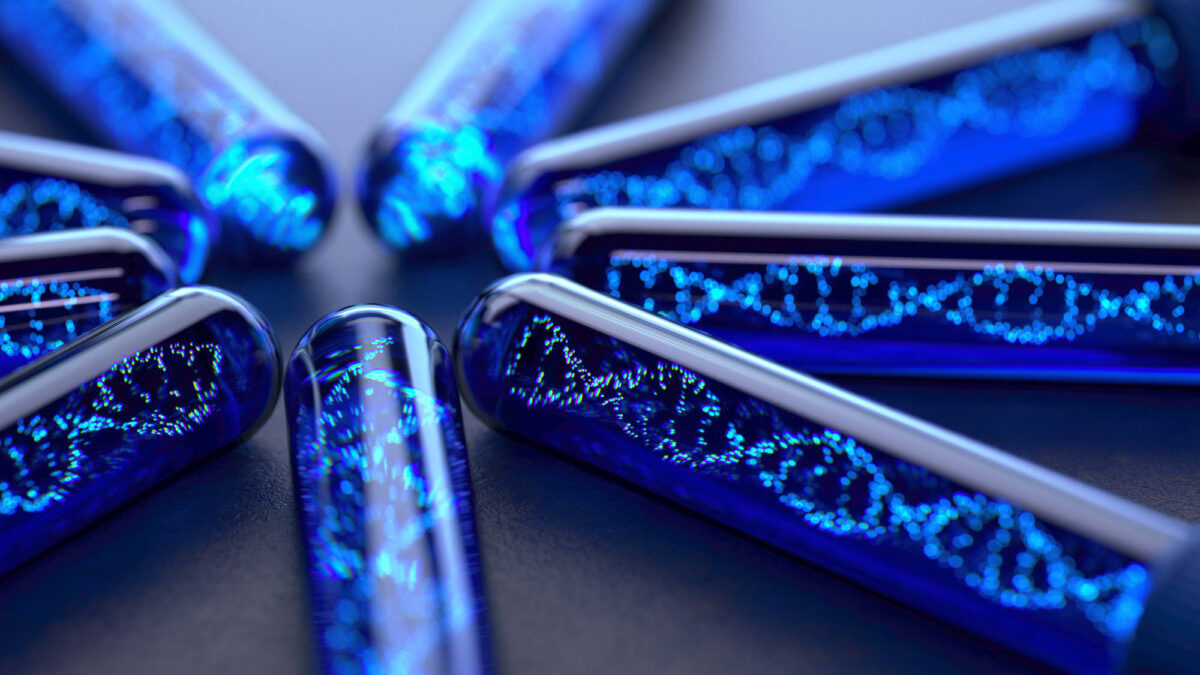The ongoing COVID-19 pandemic is caused by the emergence of the SARS-CoV-2 coronavirus. Without any adequate vaccine or therapeutics available at the moment, many researchers have turned their attention to prevention methods by studying the SARS-CoV-2 structure and its mechanism of cell entry. If the virus could be blocked from entering human cells, SARS-CoV-2 would be unable to replicate and invade the host immune system. Proteases essential for viral entry have been identified, and research reveals that protease inhibitors might be the key to stopping this infectious virus.
SARS-CoV-2 is closely related to SARS-CoV, a strain of coronavirus responsible for the SARS outbreak in 2003. Reports reveal that the two coronaviruses share 76 percent similarity in amino-acid sequence1. Therefore, the mechanism in which SARS-CoV-2 enters host cells shares many similarities with that of SARS-CoV. From previous research, it has been determined that SARS-CoV relies on the protein angiotensin-converting enzyme 2 (ACE2) to enter host cells. The S1 unit of the spike protein of SARS-CoV-2 binds to ACE2, which is the host’s transmembrane endopeptidase. Infectivity of SARS-CoV-2 is then made possible by the serine protease TMPRSS2. TMPRSS2 is critical in facilitating the spread of the virus because the virus uses it for S protein priming on its surface. Cysteine protease cathepsin B and L (CatB/L) is another protease that performs the same function as TMPRSS2. S protein priming results in the fusion of viral and host membranes, subsequently completing viral cell entry2. Heavy viral dependence on protease activity suggests that if protease inhibitors were utilized, SARS-CoV-2 infectivity could be eliminated.
Camostat mesilate is a commercial serine protease inhibitor that inhibits TMPRSS2 activity. Clinical trial results showed that camostat mesilate was successful in partially blocking SARS-CoV-2 entry into Caco-2 and Vero-TMPRSS2 cells. E-64d is an inhibitor of Catb/L, and when used conjunctively with camostat mesilate, full inhibition of viral entry was attained. The additive efficacy of the two inhibitors indicates that SARS-CoV-2 entry is driven by both TMPRSS2 and E-64d priming. However, S priming by TMPRSS2 is essential for viral cell entry, while CatB/L priming is not required for viral spread. Therefore, inhibitor drugs targeted at TMPRSS2 activity have become a more attractive option. Similar to past study results on SARS-CoV, camostat mesilate significantly reduced SARS-CoV-2 cell entry into the human lung cell Calu-3.3
Although camostat mesilate appears to be promising, another study has shown that the protease furin also plays an indispensable role in the cleavage of the SARS-CoV-2 spike protein.4 Unlike TMPRSS2, furin cleavage is not conserved across the coronavirus family, posing challenges for researchers looking to past research for guidance. Barile et al. tested camostat mesilate and used it to inhibit furin activity. Unfortunately, they discovered that camostat mesilate is a poor inhibitor of furin. The team suggested that future research should focus on developing a cocktail of inhibitors that can efficiently block both furin and TMPRSS2 activity.5
Host protease cleavage is critical to SARS-CoV-2 infection; therefore, focusing on the discovery of efficient protease inhibitors could effectively slow down transmission. More research needs to be conducted to determine protease inhibitors that can successfully inhibit the majority of proteases utilized by SARS-CoV-2. Trials on protease inhibitors are still in the early stages, but results show promise.
References
- Zhu N., Zhang D., Wang W., Li X., Yang B., Song J., Zhao X., Huang B., Shi W., Lu R. A Novel Coronavirus from Patients with Pneumonia in China, 2019. N Engl J Med. 2020;382:727–733.
- Kawase M., Shirato K., van der Hoek L., Taguchi F., Matsuyama S. Simultaneous treatment of human bronchial epithelial cells with serine and cysteine protease inhibitors prevents severe acute respiratory syndrome coronavirus entry. J. Virol. 2012; 86:6537–6545.
- Hoffmann, M., Kleine-Weber, H., Schroeder, S., Krüger, N., Herrler, T., Erichsen, S., Schiergens, T. S., Herrler, G., Wu, N. H., Nitsche, A., Müller, M. A., Drosten, C., & Pöhlmann, S. (2020). SARS-CoV-2 Cell Entry Depends on ACE2 and TMPRSS2 and Is Blocked by a Clinically Proven Protease Inhibitor. Cell, 181(2), 271–280.e8. https://doi.org/10.1016/j.cell.2020.02.052
- Lukassen S., Chua R.L., Trefzer T., Kahn N.C., Schneider M.A., Muley T. SARS-CoV-2 receptor ACE2 and TMPRSS2 are primarily expressed in bronchial transient secretory cells. EMBO J. 2020;39
- Barile E., Baggio C., Gambini L., Shiryaev S.A., Strongin A.Y., Pellecchia M. (2020). Potential Therapeutic Targeting of Coronavirus Spike Glycoprotein Priming. Molecules. 25(10), 2424.

